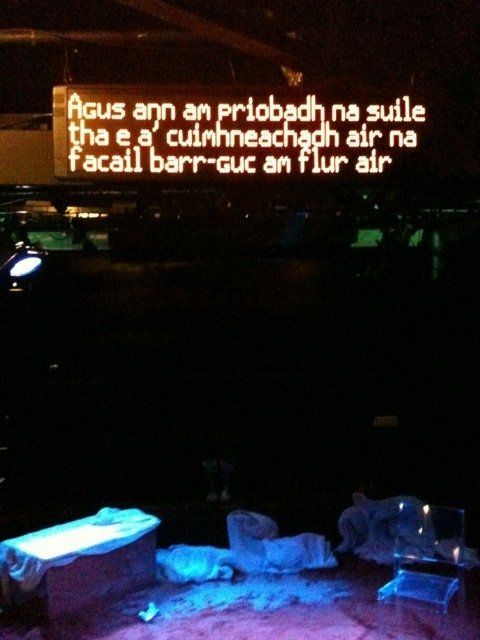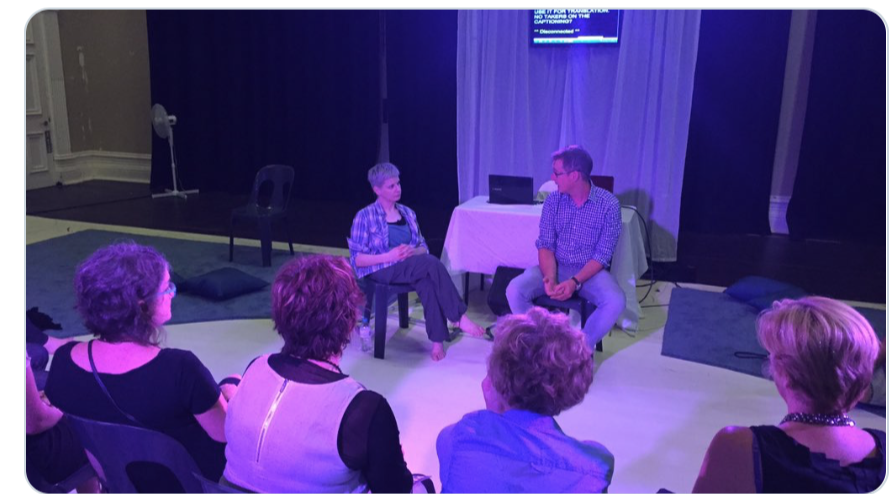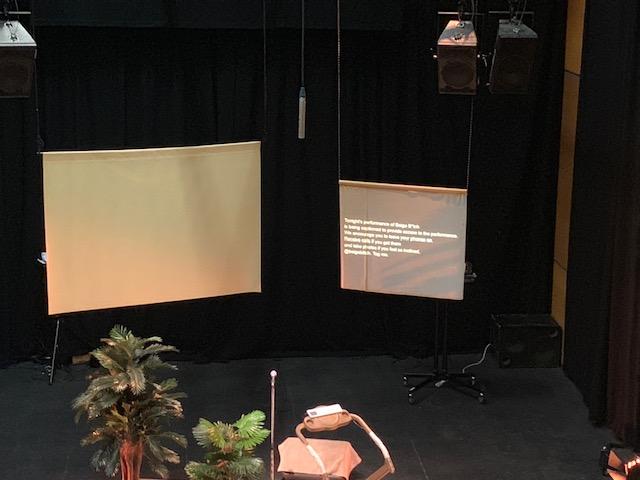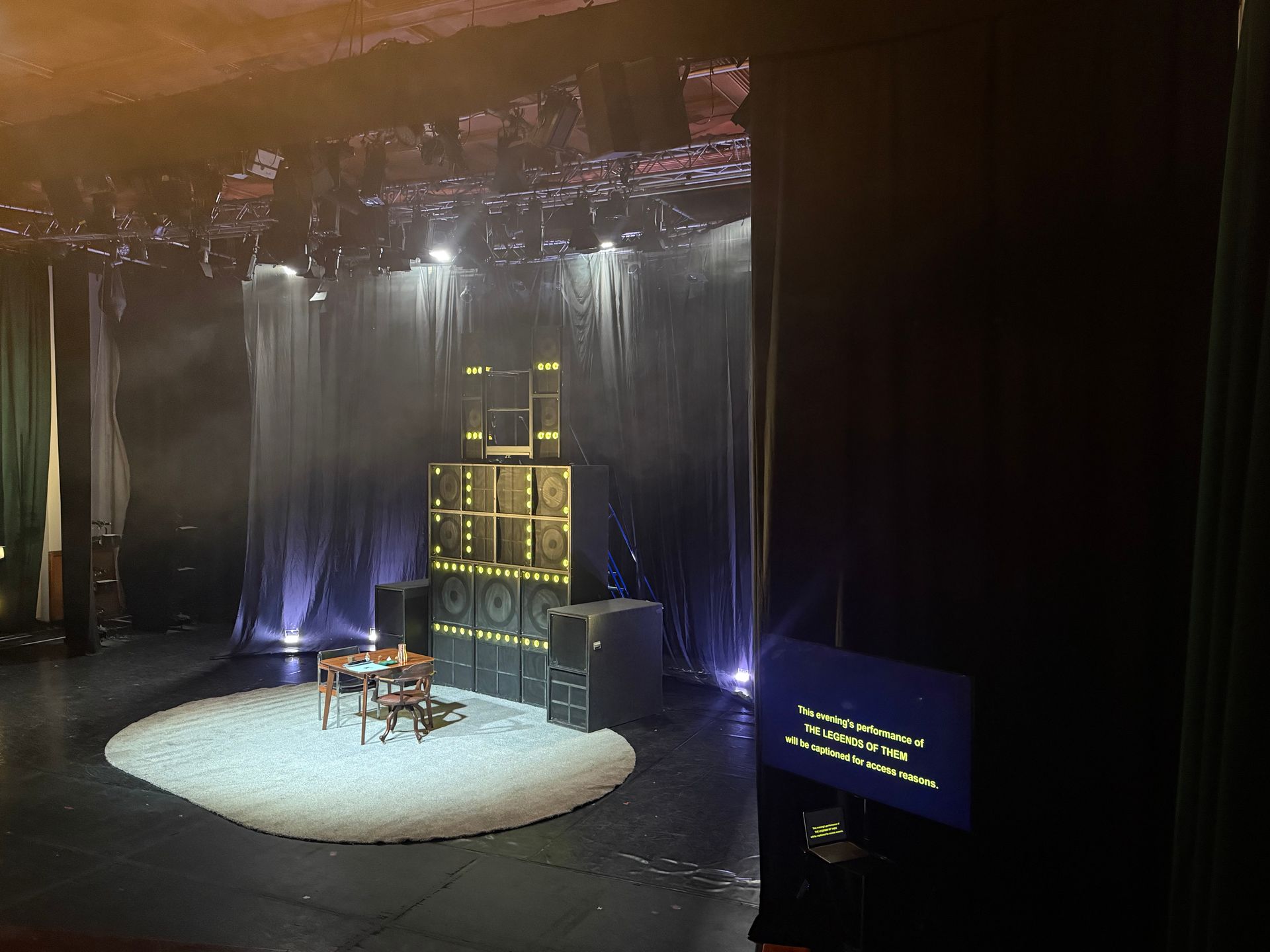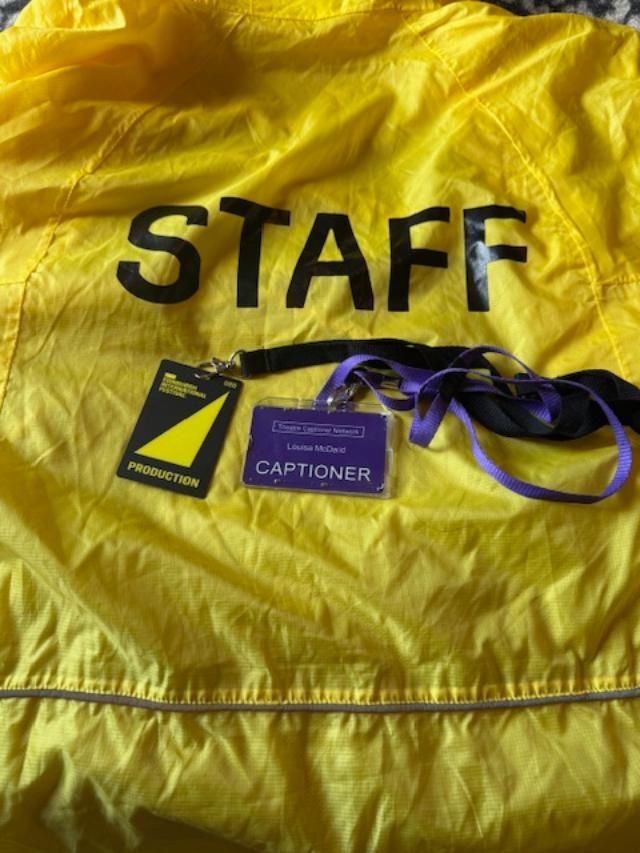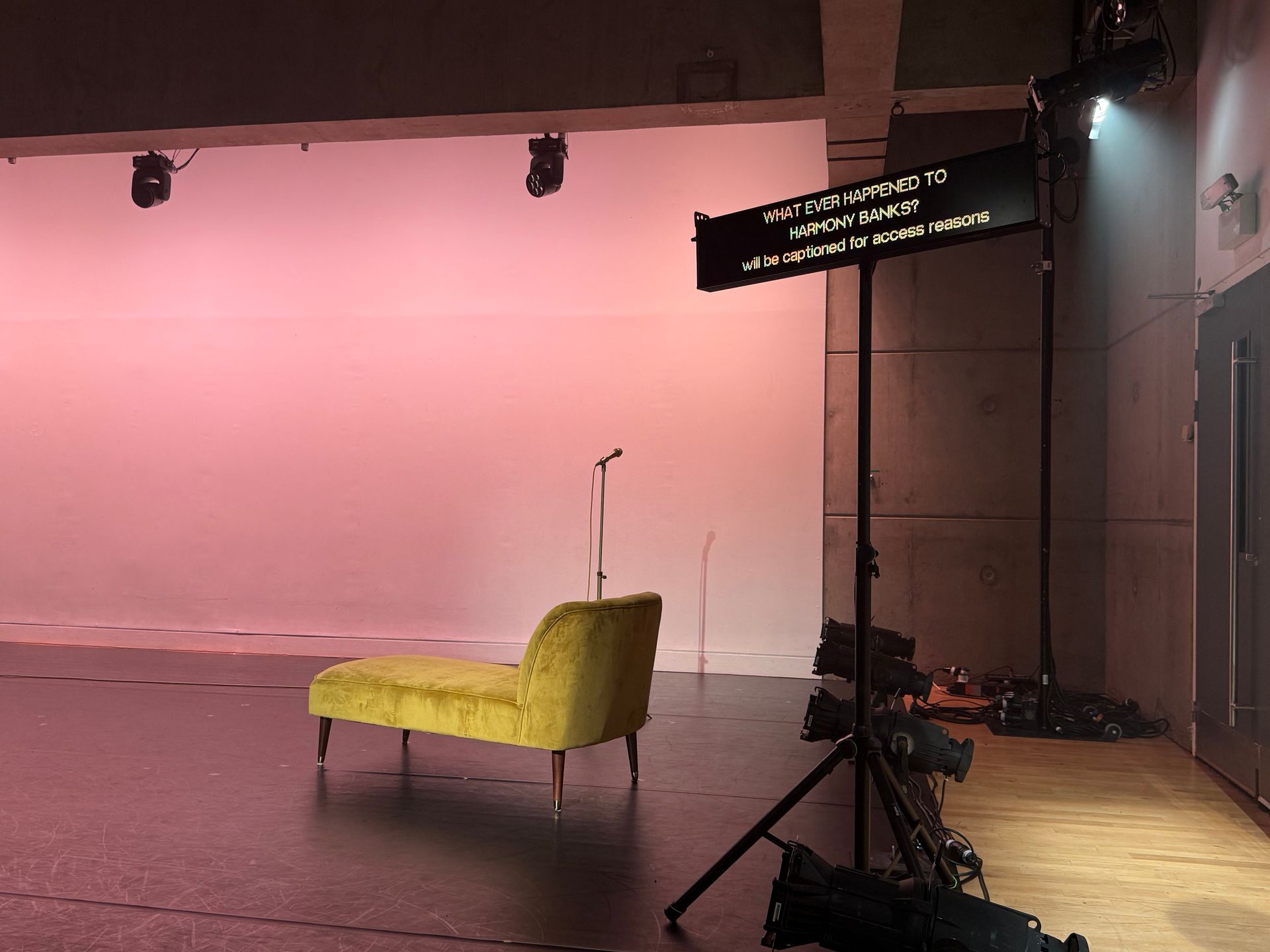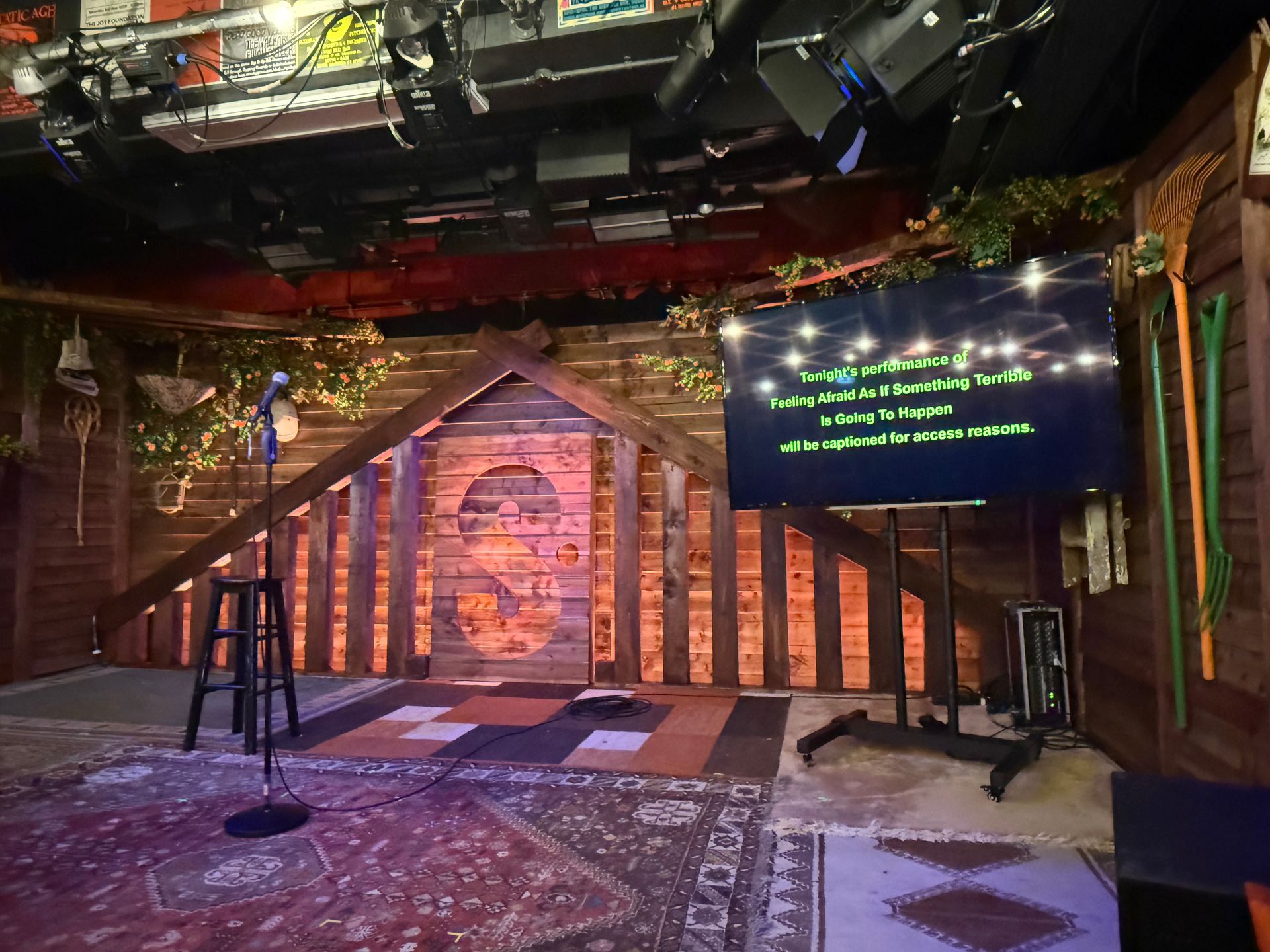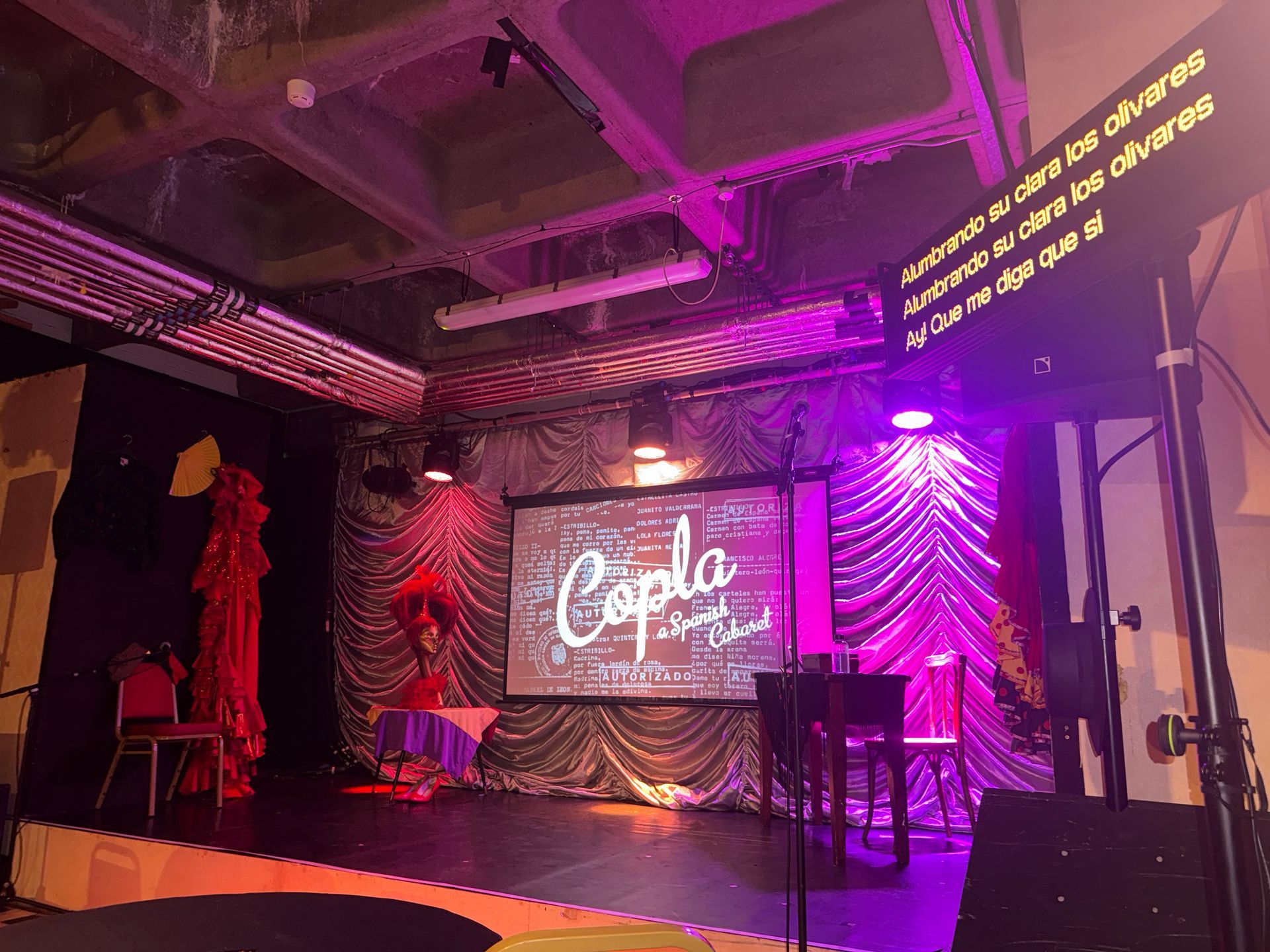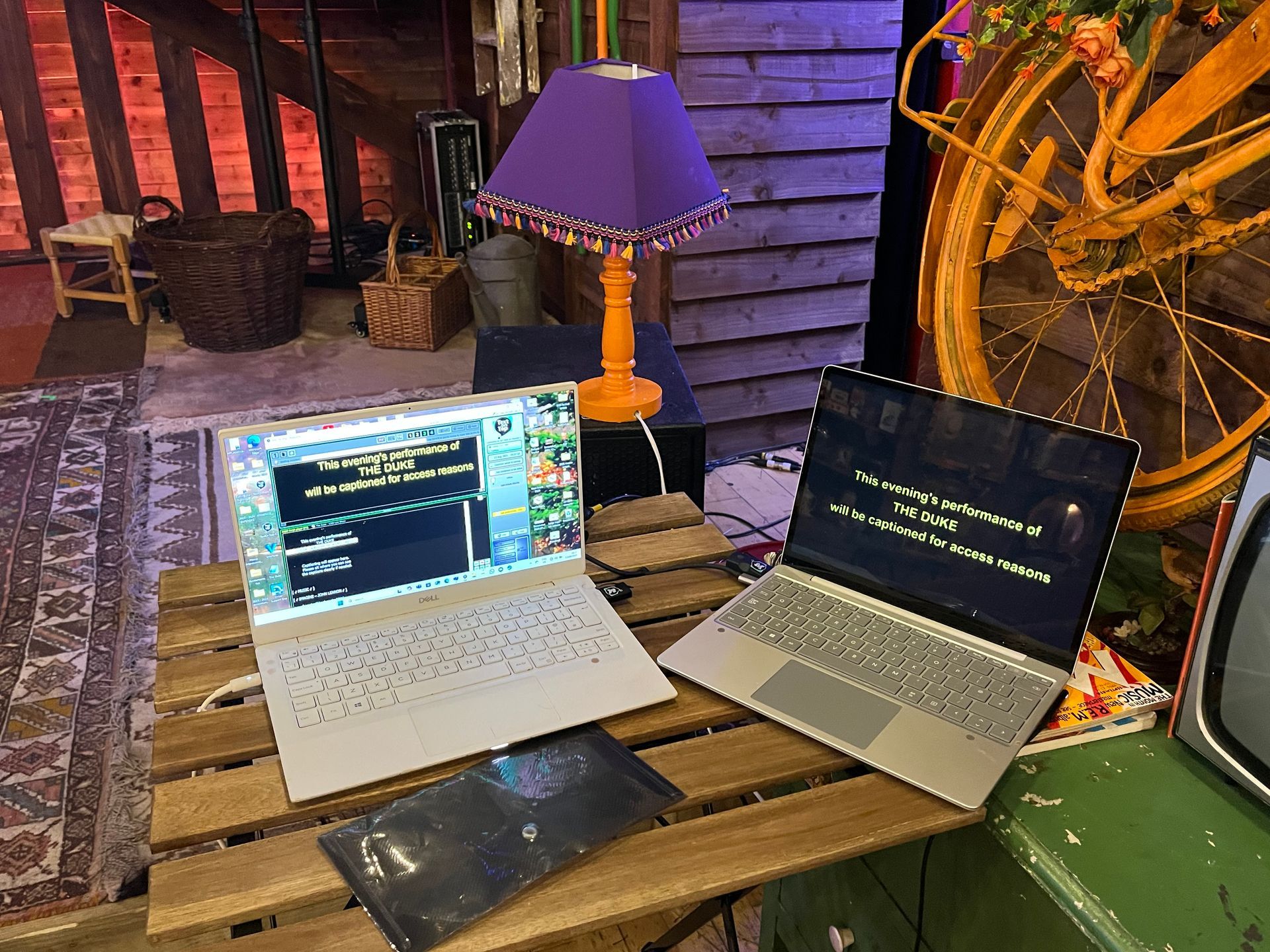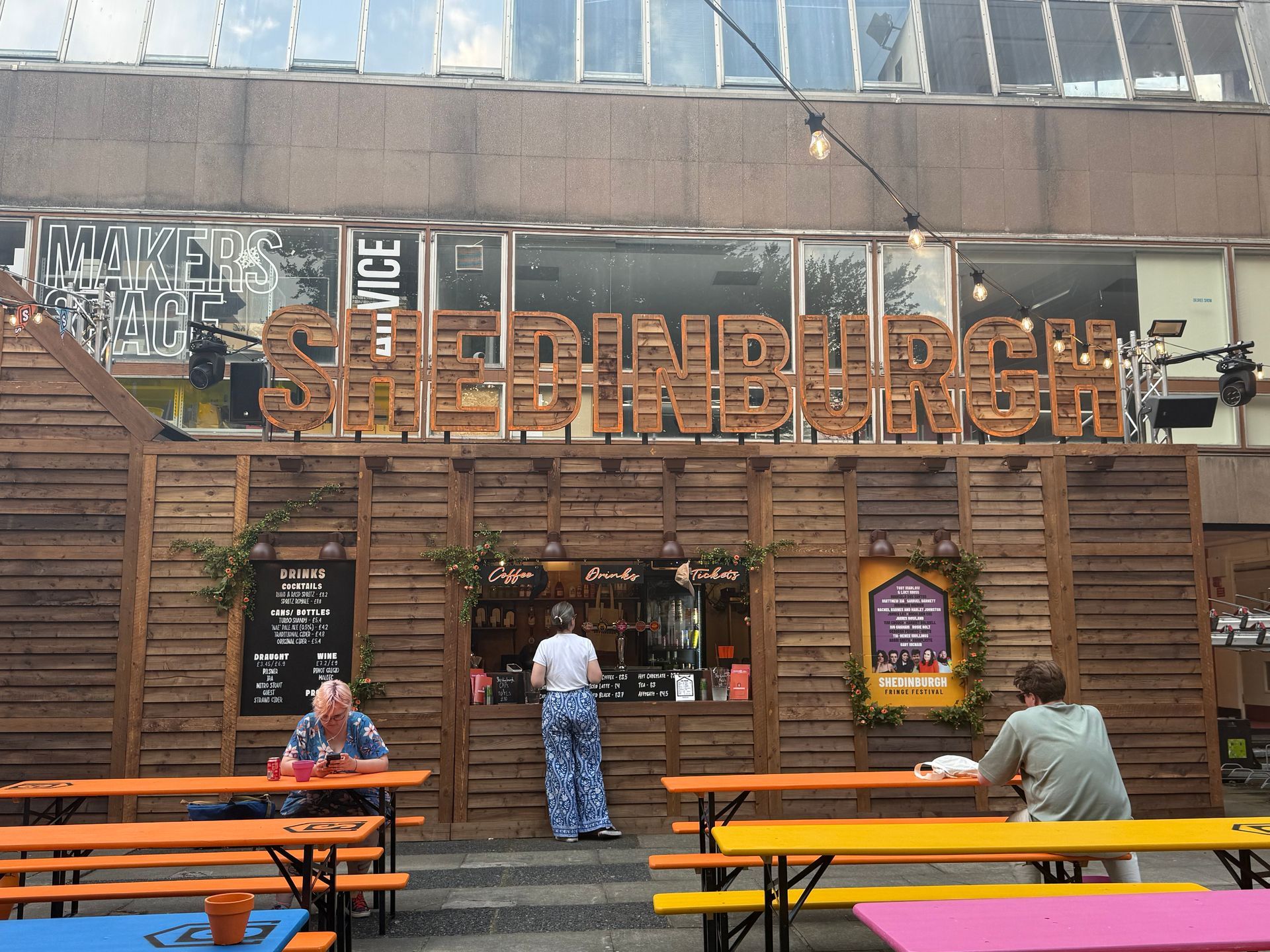Theatre Captioning is a form of live subtitling in which the actors' words appear as scrolling text located on a screen(s) located near or on the stage.
Any speech, songs or sound effects are captioned, allowing people who are deaf, hard-of-hearing, neurodiverse or non-native English speakers to follow the show. Show lyrics are identified by the presence of musical notes (♪).
Traditionally, stage captioning has been delivered using specialist equipment including pillar box shaped LED units (photo 1).
Live captioning Jack Lowden's imprompu post-performance speech at NTS's
The Fifth Step, Glasgow Pavilion, August 2024 (video)
A trained captioner cues a pre-prepared script in time to the actors' words. This model works well so long as the actors stick to the script! Often in live performance, however, actors improvise and go off-script. Depending on the production, there can be significant amounts of audience participation. The result is that theatre captioners are usually constrained to cueing only the SCRIPTED elements of the show, even when the actor(s) have veered wildly off-script, as if often the case with productions like pantos.
As
both a Stagetext trained
Theatre Captioner and professional
Live Captioner, I am able to respond to the improvised nature theatre performances and offer captioning services for both SCRIPTED and SEMI-SCRIPTED live theatre performances.
In a scenario like a panto, scripted portions of a performance will be cued out as normal. Where actors go off-script or there is audience interaction , I switch to
live captioning, typing up and cueing out UNSCRIPTED speech from actors and audience members in real-time.
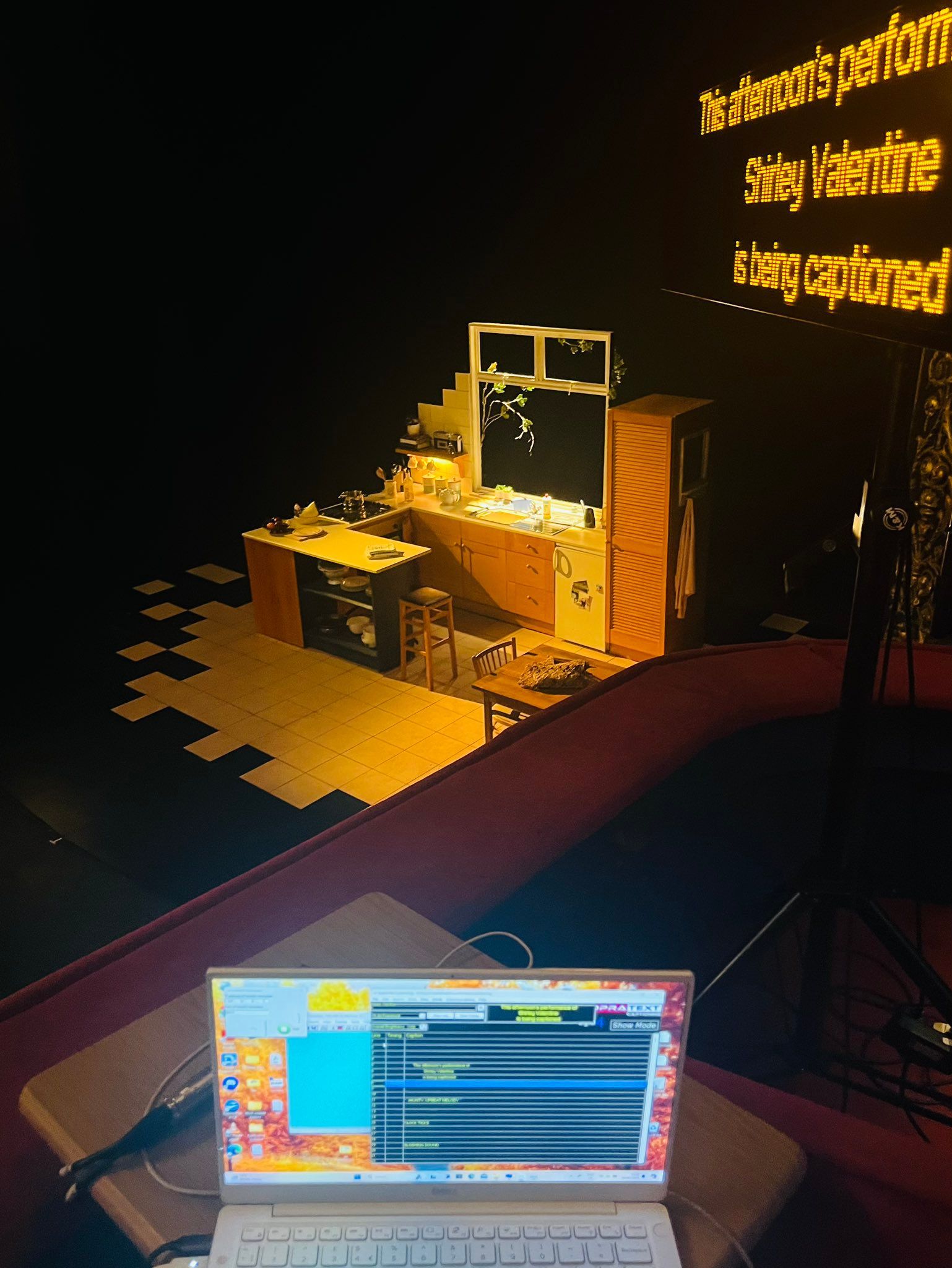
Shirley Valentine, Lyceum Theatre, 2024
Recent developments in theatre captioning technology have made it easier for captioners to output text to a range of different devices. Depending on the size of the venue, one type of output may be more suitable than another (photos 5 and 6).
- traditional LED letterbox surtitle units
- plasma screens
- stage/wall projections
- closed captions delivered to audiences' mobile devices via scannable QR code
- for smaller scale performances, up to 6 tablets can be provided for caption display.
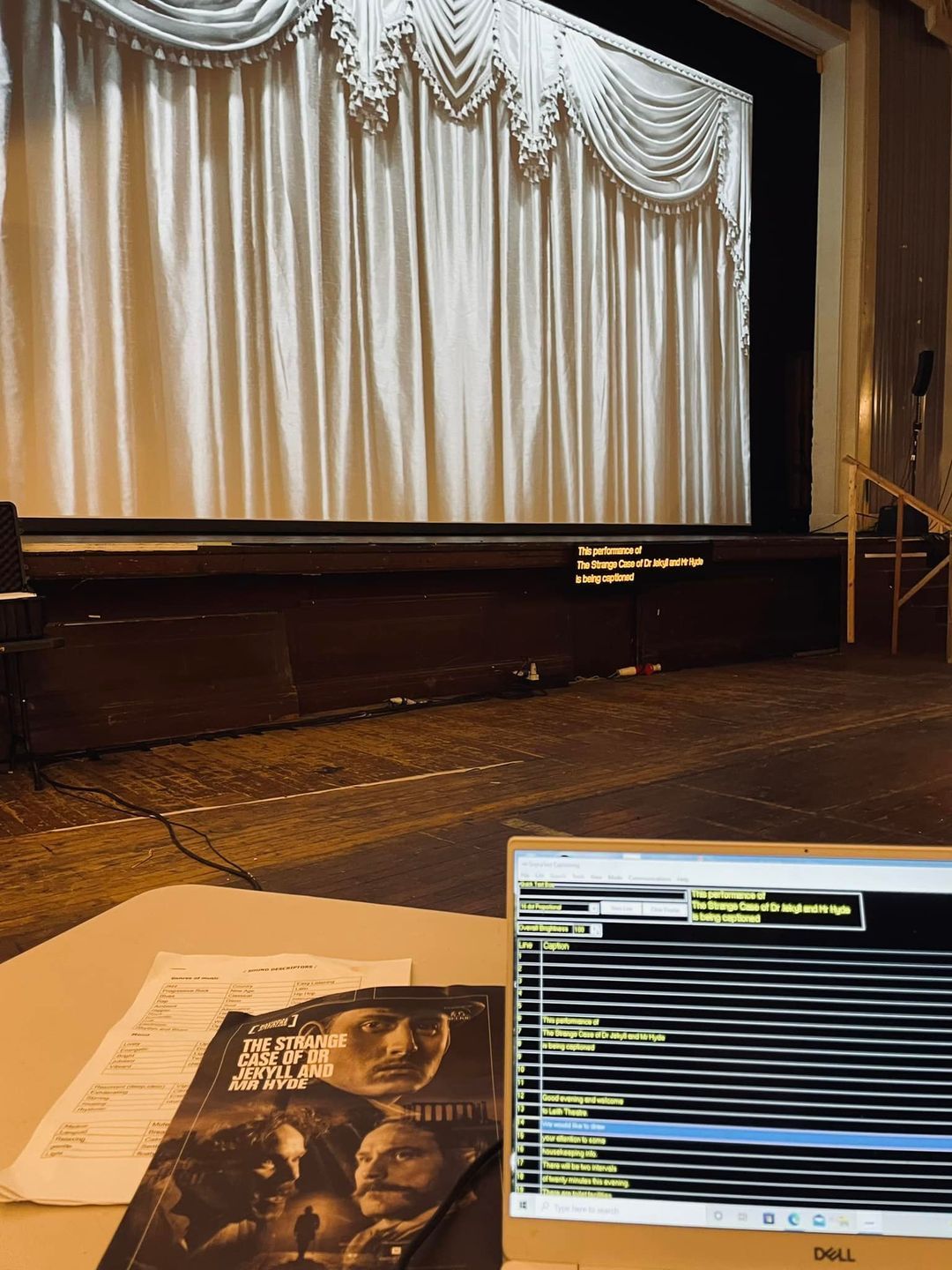
Sometimes projections are beamed onto the back wall of the stage as part of the set. Three or more lines of text can be integrated with the projection, with the lines positioned at the top, middle or bottom of the slides.
Depending on the display output method selected,
- Scripted performances can be delivered in English with multi-language translations.
- A transcript of the live performance and any post-show discussion can be provided.
- If a captioned theatre performance is streamed online, a screenshot of the number of caption viewers can be provided to quantify usage for reports to funders.

- Between 3 and 10 lines of text can be displayed.
- Text and background colours can be amended to suit the mood of the production.
- Output of off-script speech as well as pre-scripted material.
- More precise timing of captions - text can be cued by line or word by word, to avoid pre-empting a joke.
- Captions can be integrated into the set, to take account of design considerations.
Click here for Frequently Asked Questions about booking a Theatre Captioner.




